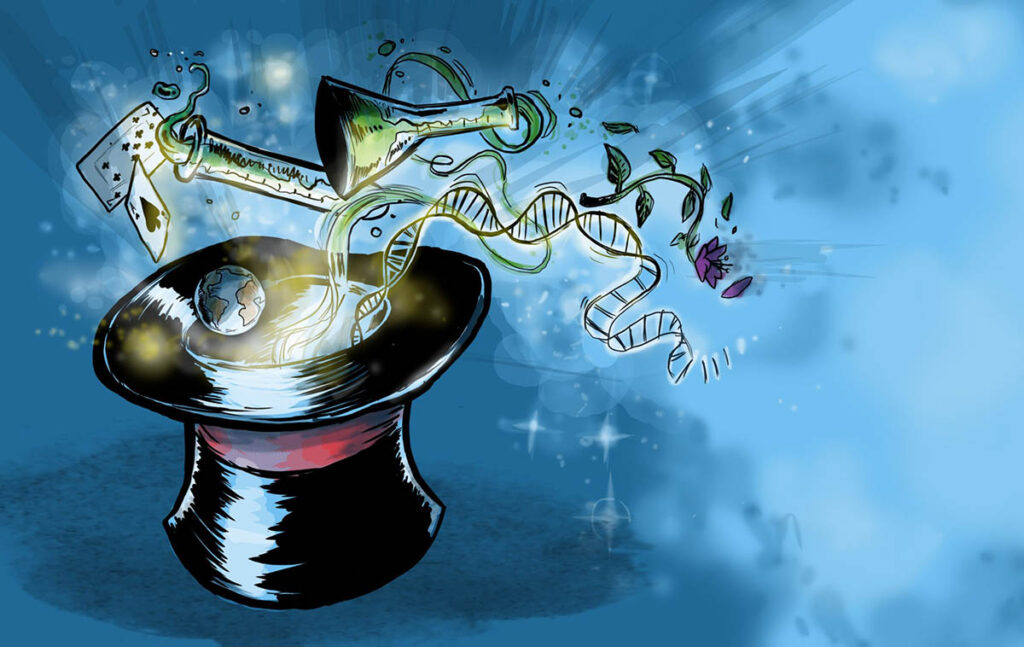Magic (illusionism) is an art that exerts enormous attraction on most people, due to its imaginary character, the apparent inexplicability, the surprise of the unexpected.
Reality itself is magical, and when a subject is presented in this way, it becomes an inexhaustible source of fascination, surprise and discovery, a dab of imagination in the framework of reality.
Thus, magic results as a tool that enhances the desire to know the themes under analysis, promoting the deepening of their study or drawing attention to a topic that, for some, could be more or less boring or even lacking in interest.
For a moment, the audience lets themselves be carried away by the art of the magician who makes people believe in the impossible, in this world, with their feet on the ground…!
But, in this case, everything you see is very real, and you can even explain that it doesn't lose its fun (quite the contrary!). It is Nature presented, so that you can appreciate it better.
The use of illusionism in Science activities, teaching them to play, appeals to children's imagination and promotes the development of their abstraction capacity, often so important in the apprehension of science concepts.
It is a distinct (and distinctive) way of integrating art to arouse curiosity for Science from the imagination of a magic show: wanting to know how to create a trick is the same as wanting to know natural phenomena and understand Nature in its possible and impossible.
Performing “a magical effect” and explaining the science that is inherent to it, stimulates this desire to learn, the desire to want to be a magician, to want to understand everything. And this is the real magic that is contained in a magic effect!
The diversification of contents and ways of communicating and disseminating science makes it possible to cover a wider universe of cultural interests.
School laboratories are spaces where scientific experiments are recreated for a better understanding of natural phenomena and their theoretical understanding.
Artistic recreation (in this case, using magic) can add another dimension to what is learned from Science and its universe.
It is important to see what makes you want to know and discover the pleasure of discovery. Feeling it is only possible from the imagination of each one, which can and should be explored in spaces of cultural enrichment as well.
It is, therefore, truly important that, in these spaces of cultural promotion, science intersects and intricates with the world of arts (music, theater, magic and other areas of culture), in order to be openly considered as an accessible area of knowledge. , an integral part of the general culture of any citizen, in full exercise of citizenship. THE STEM (Science, Technology, Engineering and Mathematics) to be STEAM (Science, Technology, Engineering, Arts and Mathematics).
Galeano already said that we are made not only of atoms, but also of stories. With this “marriage” between science and magic (and books), to such atoms and stories “FMJ Magic Minds” also add small particles of wonder.





















Comments